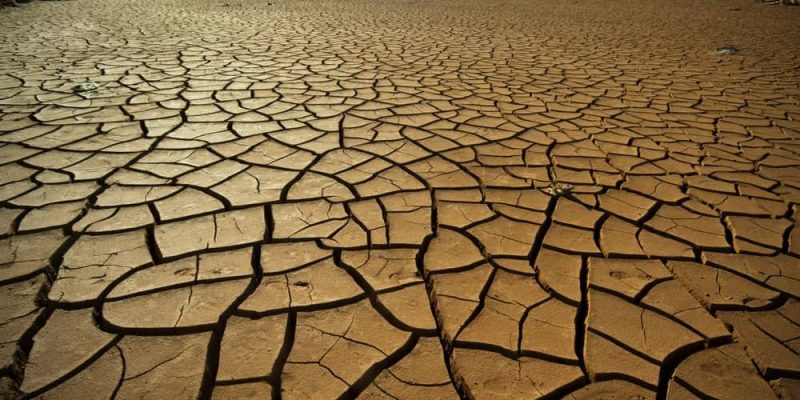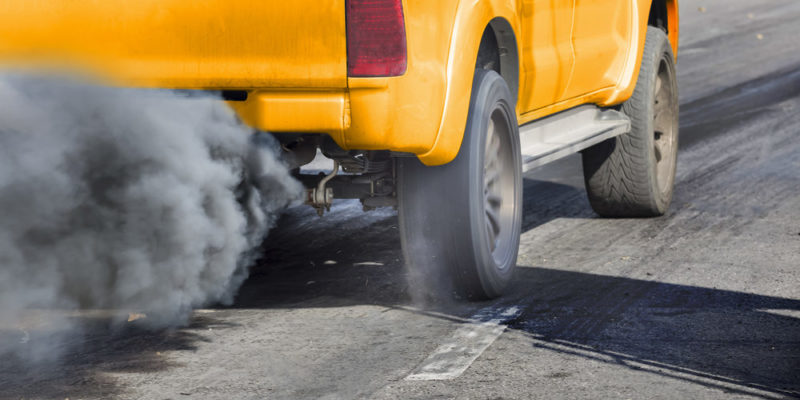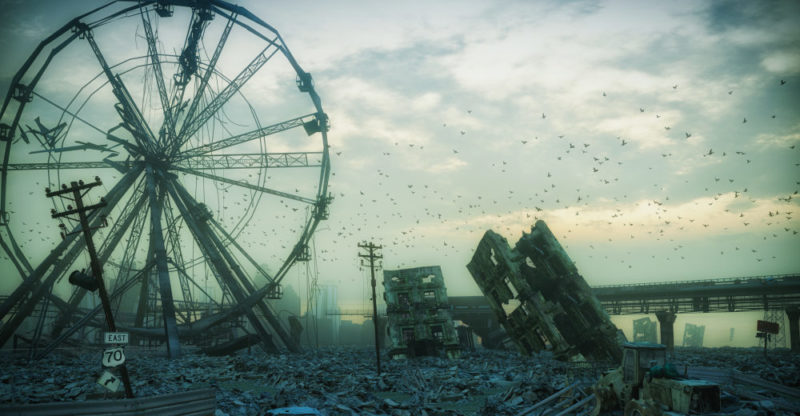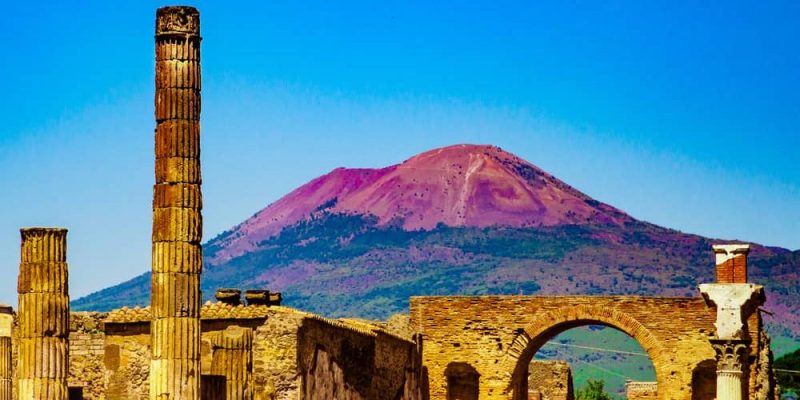We explain what natural disasters are and what their causes and consequences are. In addition, its characteristics, classification and examples.
What are natural disasters?
Natural disasters are sudden and violent changes in the environment , causing significant material losses and human lives and the product of environmental accidents that are not caused directly by man, such as earthquakes, tsunamis, troughs, etc.Thus, we speak of disasters when certain environmental conditions go to extremes , exceeding the limits of what is considered normal.
For example, a tectonic earthquake can be harmless, if it does not increase its intensity and turns into an earthquake, capable of causing numerous deaths and destruction in nearby cities .
Similarly, it could be argued that disasters are never entirely natural , but are to some extent due to poor planning (or total lack of it), recklessness, or environmental destruction of human societies .
Natural disasters should not be confused with environmental disasters, in which a specific element pollutes, degrades or destroys a certain instance of the environment .
Causes of natural disasters
 The causes of a natural disaster are not always determinable , or simply respond to environmental factors that are impossible to predict.
The causes of a natural disaster are not always determinable , or simply respond to environmental factors that are impossible to predict.Thus, it is possible to explain that earthquakes are due to the movement of the Earth's tectonic plates , but not when or where the next one will occur or how intense it will be.
Classification of natural disasters
 Natural disasters can be classified according to their nature in:
Natural disasters can be classified according to their nature in:
- Mass landslides. This is the name given to avalanches, avalanches and other forms of landslide or landslide, such as stones, mountains of earth, mud, etc.
- Atmospheric phenomena. Those derived from atmospheric or weather conditions , such as drought or electrical storms , blizzards or hurricanes .
- Biological disasters. Pandemics and other disorderly proliferations of some organisms above the others, causing them death en masse, such as the Black Death in medieval Europe .
- Volcanic eruptions. They occur when boiling magma from the deep layers of the Earth gushes out through volcanoes , forming new layers of the Earth's surface and burning everything in its path.
- Space phenomena. It refers to the fall of objects from outer space, as was the case of the meteorite that hit Yucatan, Mexico , and that supposedly would have extinguished the dinosaurs .
- Forest fires. Often times the drought and intense sun , if not the presence of glass residues or other materials that serve to concentrate the sun's rays, unleash huge fires that can devour hectares of grasslands or even forests in their wake.
- Earthquakes . They are violent and disorderly movements of the earth's crust by action of the tectonic movements of the earth's surface. They can be mild and cause little damage, or they can be real shocks that collapse buildings and mountains and cause other subsequent disasters.
- Tsunamis and floods. Often the result of earthquakes or abrupt climatic changes (troughs, storms, etc.), tsunamis and floods respectively flood everything in their path, accumulating masses of water that when released can drag everything in their path or simply submerge it, ruining crops. and destroying populations .
Consequences of natural disasters
Natural disasters often have direct consequences on human life, since they can cost the lives of numerous people (hundreds, thousands or even millions, depending on the case) or they can also trigger other disasters in their wake.For example, a very intense earthquake close to the coast often causes a tsunami , which in turn floods fertile land and leads to famine, all in a terrible domino effect.
Examples of natural disasters
 Some of the most recurrent natural disasters are:
Some of the most recurrent natural disasters are:
- Hurricanes . Climatic systems characterized by intense winds trapped in a low pressure axis, accompanied by constant rains and electrical storms.
- Tornadoes . Formations of hot and cold air masses that rotate around each other with such speed that they gain enough strength to lift everything in their path and demolish buildings.
- Earthquakes . As we have said, these are very intense earthquakes (greater than 5 on the Richter scale with which they are measured), the intensity and duration of which depends on the magnitude of the structural damage they cause.
- Avalanches . Avalanches of rocks and other slippery materials (snow, trees, mud, etc.), which accumulate and then collapse on what they have underneath, whether towns or channels of rivers causing flooding .
- Heat waves. Climate changes resulting from the greenhouse effect and global warming often alter the climate and make it extreme, causing frosts in winter and brutal heat waves in summer, both incompatible with life and causing droughts (which in turn can cause famines) or floods.
Frequency of natural disasters
 Natural disasters are, for the most part, unpredictable, they happen whenever . But at the same time they present patterns of recurrence (cycles) that many experts (seismologists, climatologists, geographers, etc.) use to alert the population that disaster could occur more or less soon and appropriate precautions should be taken.
Natural disasters are, for the most part, unpredictable, they happen whenever . But at the same time they present patterns of recurrence (cycles) that many experts (seismologists, climatologists, geographers, etc.) use to alert the population that disaster could occur more or less soon and appropriate precautions should be taken.
Prevention of natural disasters
Prevention is, at the end of the day, the only chance humanity has in the face of the powerful forces of the environment. Prepare to withstand an earthquake and build taking into account that you live in a seismic zone , or design and maintain good drainage systems to better face the rainy seasons, including having contingency and evacuation plans and an informed and prepared population, can be some of the most efficient measures to safeguard human lives in the event of a disaster. The most responsible governments are committed to keeping their population informed in this regard.
Responsibilities of the human being
 In many cases, human actions can lead to natural disasters or can increase their frequency. This does not mean that they are your direct responsibility, but it does mean that measures have not been taken to reduce the risk, quite the opposite.
In many cases, human actions can lead to natural disasters or can increase their frequency. This does not mean that they are your direct responsibility, but it does mean that measures have not been taken to reduce the risk, quite the opposite.For example, the increase in the margins of air pollution leads to the greenhouse effect and this to global warming, which affects the climate causing droughts, hurricane storms, floods and other similar phenomena, which often occur out of season, taking humanity by surprise.
Another typical example is irresponsible construction , which urbanizes the course of ancient rivers or in areas surrounding an active volcano, exposing the population to a tragedy.
International agreements
The efforts of the United Nations Organization and other groups that study the environment to reduce natural disasters, produced a series of protocols for the regulation of human polluting activity and information campaigns in vulnerable areas, such as the celebration of the Day International for Disaster Reduction, held on the second Wednesday in October.
Natural disasters in culture
 Natural disasters have a great representation in the culture of humanity, both as destroyers of everything known (the apocalypse) or as purifying events (such as the famous biblical flood). These are events that remind man of his helplessness and reconnect him with the notions of the divine and the sacred.
Natural disasters have a great representation in the culture of humanity, both as destroyers of everything known (the apocalypse) or as purifying events (such as the famous biblical flood). These are events that remind man of his helplessness and reconnect him with the notions of the divine and the sacred.
Major natural disasters in history
 Some of the great natural disasters in history are:
Some of the great natural disasters in history are:
- The Great Drought of the 1930s in the United States.
- The tornado seasons in the South of the same country.
- The Spanish flu that in 1918 killed almost 40 million people .
- The eruption of Mount Vesuvius that wiped out the Roman city of Pompeii.
The above content published at Collaborative Research Group is for informational and educational purposes only and has been developed by referring reliable sources and recommendations from technology experts. We do not have any contact with official entities nor do we intend to replace the information that they emit.
Veronica is a culture reporter at Collaborative Research Group, where she writes about food, fitness, weird stuff on the internet, and, well, just about anything else. She has also covered technology news and has a penchant for smartphone stories. .
Leave a reply
Your email address will not be published. Required fields are marked *Recent post

Sport: What Is It, Types, Risks, Features, Characteristics and Examples

Dogs: Emergence, Features, Characteristics, Feeding and Breeds

Story: Definition, Elements, Structure, Features and Characteristics

